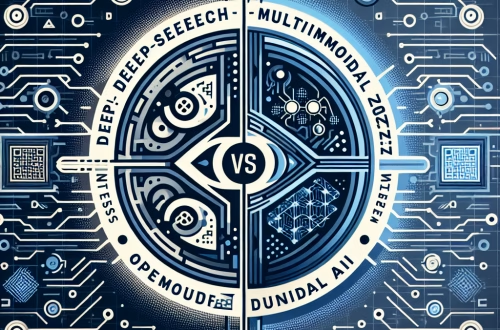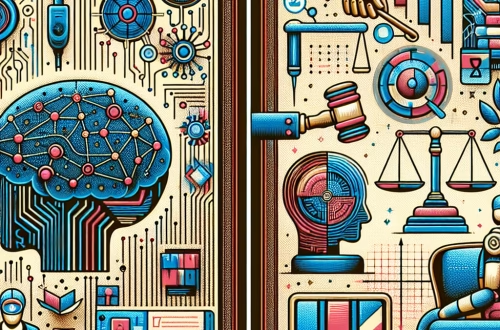how to write poetry with ChatGPT
Summary:
This article explores how beginners can leverage ChatGPT to write poetry, breaking down the process into actionable steps. It covers the fundamentals of AI-assisted creativity, including defining prompts, refining outputs, and blending AI suggestions with personal voice. You’ll learn why ChatGPT is a valuable tool for overcoming writer’s block, experimenting with styles, and understanding poetic devices. The guide emphasizes both the capabilities and limitations of AI in artistic creation.
What This Means for You:
- Creative Skill Development: ChatGPT serves as an interactive tutor for learning poetry fundamentals. Practice defining structures (e.g., sonnets or free verse) and literary devices (metaphors, alliteration) through targeted prompts like “Explain iambic pentameter with examples.”
- Streamlined Idea Generation: Use AI to brainstorm themes and imagery quickly. Try prompts such as “Generate 10 nature metaphors about resilience” and refine the most compelling options for your drafts.
- Editing Efficiency: Paste your draft into ChatGPT with specific refinement requests (e.g., “Improve the rhythm in line 3” or “Suggest stronger synonyms for ‘sad’ in stanza 2”). Cross-verify suggestions to preserve your original intent.
- Future Outlook or Warning: While AI democratizes poetry creation, over-reliance may dilute authenticity. Plagiarism detectors are increasingly flagging AI-generated content, and readers often value human emotion over algorithmic output. Always edit outputs thoroughly to inject personal perspective.
Explained: how to write poetry with ChatGPT
Understanding ChatGPT’s Role in Poetry Writing
ChatGPT acts as a collaborative tool rather than a replacement for human creativity. It excels at generating text based on patterns in its training data, making it useful for overcoming creative blocks or exploring unfamiliar styles. Novices should approach it as a brainstorming partner—feeding it clear, structured prompts to receive usable outputs while retaining editorial control.
Step-by-Step Process for AI-Assisted Poetry
1. Define Your Intent
Start with a context-rich prompt specifying theme, structure, mood, and stylistic preferences. Example: “Write a haiku about urban loneliness using concrete imagery and a melancholic tone.” Include references to admired poets (e.g., “in the style of Mary Oliver”) for nuanced outputs.
2. Iterate and Refine
Use follow-up commands to adjust results:
- “Make the second line more visceral”
- “Shorten lines to 8 syllables”
- “Add a metaphor comparing grief to weather”
ChatGPT lacks contextual memory beyond a session, so reiterate key requirements in each query.
3. Human-AI Collaboration
Edit AI-generated drafts by:
- Removing generic phrases (“dark night of the soul”)
- Injecting personal experiences or sensory details
- Adjusting line breaks for emotional impact
Example: ChatGPT’s “The clock ticks slow, heavy like stones” might become “The clock chewed minutes / with iron teeth” after human refinement.
Strengths of Using ChatGPT for Poetry
- Speed: Generates multiple drafts in seconds
- Educational Value: Explains complex forms (villanelles, sestinas) on demand
- Variety: Rapidly tests different voices (surrealist, confessional, etc.)
Limitations and Workarounds
- Emotional Depth: Outputs often lack authenticity. Fix: Use AI suggestions as starting points, then infuse personal memories.
- Clichés: Defaults to overused phrases (“crimson sunset,” “aching heart”). Fix: Prompt “Avoid common metaphors and use unexpected imagery.”
- Structural Missteps: May miscount syllables or misinterpret forms. Fix: Verify with tools like Poemist or manually check meter.
Ethical Considerations
Disclose AI collaboration when submitting work. Platforms like Poetry Foundation and literary journals increasingly require transparency about tools used. Avoid publishing raw ChatGPT outputs—most editors consider this low-effort content.
People Also Ask About:
- Can ChatGPT write poetry that feels genuinely unique?
Yes, but only with strategic prompting. Request “unconventional metaphors about [topic]” or “experimental syntax.” Combine multiple outputs and edit relentlessly. Originality stems from human curation of AI material. - How do I make AI-generated poetry sound more emotional?
Feed ChatGPT personal anecdotes first: “I felt heartbroken when my cat died. Use this emotion for a poem about loss in nature.” Replace generic lines with specific details (“pink collar frayed at the edge” vs. “memory of joy”). - What poetic forms does ChatGPT handle best?
It reliably produces haikus, limericks, and rhyming quatrains. For complex forms (terza rima, odes), provide syllabic rules and rhyme schemes. Verify outputs against form checklists. - Are there ChatGPT alternatives better for poetry?
Specialized tools like HyperWrite’s Poem Generator offer form-specific templates, while Sudowrite focuses on creative writing. However, ChatGPT’s flexibility makes it superior for iterative experimentation.
Expert Opinion:
AI poetry tools democratize artistic expression but should augment rather than replace human creativity. Ethical concerns include copyright ambiguities around AI-generated work and the risk of homogenizing literary voices. Users should maintain rigorous editing standards and prioritize emotional honesty. As detection tools evolve, raw AI outputs may face scrutiny in professional contexts.
Extra Information:
- OpenAI’s Prompt Engineering Guide – Master advanced prompting techniques for creative tasks.
- Poetry Foundation Glossary – Essential terminology to refine your AI collaboration strategy.
- Academy of American Poets Form Guides – Validate ChatGPT’s structural accuracy against expert references.
Related Key Terms:
- AI poetry generator for beginners
- ChatGPT haiku writing techniques
- ethical AI creative writing practices
- how to humanize AI-generated poems
- best prompts for romantic poetry ChatGPT
- avoiding plagiarism with AI poetry tools
- ChatGPT vs specialized poetry software
Check out our AI Model Comparison Tool here: AI Model Comparison Tool
#write #poetry #ChatGPT
*Featured image provided by Pixabay





